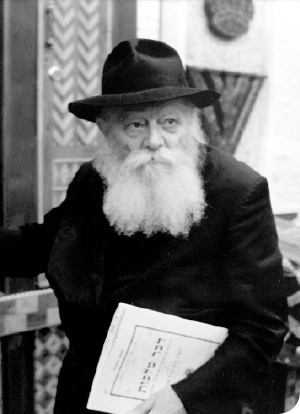Prior to the Rebbe Rayatz’s histalkus in 5710, he emphasized the concept of chayim nitzchiim, eternal life. The Rebbe MH”M points out the profound significance of the topics a Rebbe discusses in his final sichos delivered in this world: they serve as instructions for how to proceed in the wake of his histalkus. * The following excerpt, which also speaks of eternal life, is from the last sicha the Rebbe has yet delivered on Gimmel Tammuz.
Translated by Boruch Merkur
 5. […] The words “Korach” and “Chukas” both contain the two letters – Ches and Kuf – that comprise the word “chok”; the difference lies in the fact that “Korach” has a Reish, whereas “Chukas” has a Tav. Korach (who came from Shevet Levi) experienced the revelation of “chok,” transcending reason and intellect and beyond measure and limitation. (Chassidus explains that Korach’s quarrel stemmed from his virtue, as our Sages attest “he was clever,” for he beheld the revelation that transcends measure and limitation, as will be manifest [universally] in the Future Era. His mistake, however (in disputing the appointment of Aharon as Kohen [Gadol]), was on account of the concept represented by the letter Reish (poverty), which signifies how the manifestation (of thought and speech) does not come about through [the regular channel of] Seder Hishtalshlus (Korach had sought to separate Supernal reality from Earthly existence), for the letter Reish lacks the third line ([the vertical line on the left side] of the letter Hei), corresponding to action.
5. […] The words “Korach” and “Chukas” both contain the two letters – Ches and Kuf – that comprise the word “chok”; the difference lies in the fact that “Korach” has a Reish, whereas “Chukas” has a Tav. Korach (who came from Shevet Levi) experienced the revelation of “chok,” transcending reason and intellect and beyond measure and limitation. (Chassidus explains that Korach’s quarrel stemmed from his virtue, as our Sages attest “he was clever,” for he beheld the revelation that transcends measure and limitation, as will be manifest [universally] in the Future Era. His mistake, however (in disputing the appointment of Aharon as Kohen [Gadol]), was on account of the concept represented by the letter Reish (poverty), which signifies how the manifestation (of thought and speech) does not come about through [the regular channel of] Seder Hishtalshlus (Korach had sought to separate Supernal reality from Earthly existence), for the letter Reish lacks the third line ([the vertical line on the left side] of the letter Hei), corresponding to action.
Chukas, on the other hand – “this is chukas ha’Torah, the law of the Torah” – draws down from “chok” (beyond measure and limit) into the letter Tes, the final letter of the twenty-two letters of the Torah. Chukas thus represents drawing down G-dliness through the entire Seider Hishtalshlus (all the letters from Alef to Tav), utilizing all the three lines (of the letter Tes) of thought, speech, and action, as well as Torah, avoda [i.e., t’filla, prayer], and acts of kindness. In fact, this manifestation occurs in a manner whereby all three unite.
The significance of this union is as follows. The final stage and perfection of avoda is characterized by speed, described as m’hiros d’k’dusha, the alacrity of holiness (of the hamshacha that transcends Hishtalshlus within Seider Hishtalshlus). At this spiritual height there is the union of all three lines, meaning that – with alacrity – the Supernal (i.e., thought and speech) is directly expressed within the Earthly (action, deed) without any interruption between them (unlike what is represented by the letter Hei). Thus, the point beneath (the left line of) the letter Tav is attained, the point of bittul, selflessness. It is actually a large point (having length and width), meaning that the bittul goes together with [the seemingly contradictory expression of] the expansion of length and width. The point appears at the end of the Tav, symbolic of the perfection of the point of bittul, at the completion of one’s avoda.
This process also brings about the concept of “chukas” meaning “chakika,” engraving, signifying an (unchanging) eternal manifestation, which is connected with the letter Tav, as our Sages say, “Tav – t’chiya, enlivens,” the ultimate expression of which is chaim nitzchiim, eternal life.
(From the address of Thursday of Parshas Korach on the second day of Rosh Chodesh Tammuz 5751, as well as Shabbos Parshas Korach, Gimmel Tammuz; Seifer HaSichos 5751, pg. 656)